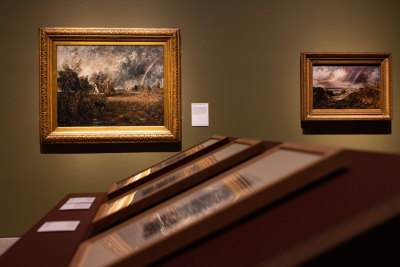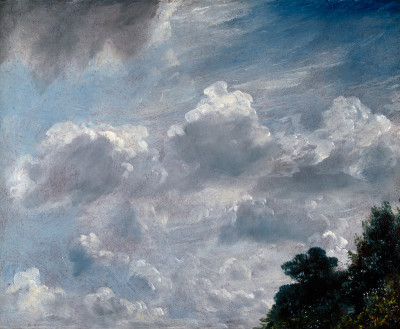Object of the month: March 2016
Object of the month: March 2016
Mick Rooney RA's 'Shangri-la'
By The RA Collections Team
Published 1 March 2016
“All my paintings are ultimately about the human condition, figures doing something or nothing.”
-
Shangri-la was a fictional place described by the British author James Hilton in his 1933 novel Lost Horizon. In Hilton’s book Shangri-la is a mystical, harmonious valley in the western end of the Kunlun Mountains, Tibet. This mythical Shangri-la has become synonymous with an earthly paradise, a permanently happy place, isolated from the outside world. Rooney explained that his Shangri-la (1990; pictured) “was painted in a rented studio in St. Leonards-on-Sea” at the time he was trying to build a house in London. He thinks that “perhaps the painting represents an unobtainable ideal, but only fleetingly”. Perhaps Rooney painted the work as escapism from the trials and tribulations of house building, imagining a distant and more peaceful place in time. Throughout his life, Rooney’s work has been influenced by travel in Europe, North Africa and Mexico as well as by literature.
The painting is Mick Rooney’s ‘Diploma work’, accepted by the Royal Academy in 1992 on his election. It is typical of Rooney’s work with its crowded, heaving host of imagined characters painted with great warmth and humour which creates a striking, magical atmosphere. The bustling figures within the painting are both vivid and unusual, resembling the Commedia dell‘arte troupes of 15th- and 16th-century Italy. Rooney claims he is a painter of ideas and thoughts: “All my paintings are ultimately about the human condition, figures doing something or nothing. My work is based on things remembered or imagined rather than the real world around me. I hope that my work is poetical and lyrical as a result.”
-

Mick Rooney RA, Shangri-La, 1990.
Acrylic and oil on card. © Royal Academy of Arts, London.
-
The painting uses Rooney’s typical colour palette of terracotta, yellow ocre, Naples yellow, ultramarine, turquoise blue and white, with blues and purples particularly dominating the picture. Rooney himself comments that he likes to know he can paint a hand or fingernail in great detail in contrast to areas of less detail. This technique is demonstrated by the contrast between the detailed figures in the centre of the painting and the simplified figures and buildings in the background.
Mick Rooney was born in 1944 in Epsom, Surrey. He studied at the Sutton School of Art from 1959 and then continued at the Wimbledon School of Art until 1964 before finally studying at Royal College of Art from 1964 to 1967. It was at the Royal College of Art that Rooney was awarded the Austin Abbey Major scholarship to study at the British School of Rome for a year from 1967 until 1968. In Rome he was commissioned by the Franciscan Order to create a wall mosaic for a new Basilica in Nazareth, Israel. Rooney taught at various art colleges and was Artist in Residence for the Towner Art Gallery, Eastbourne in 1983. He was also one of many artists commissioned for ‘Art on the Underground’, a poster commissioning initiative launched in 1986. He was asked to paint a well-known London area and chose Brick Lane. A Windy day in Brick Lane, painted in 1991, depicts a jumble of people being buffeted by the wind and struggling to carry rolls of fabric by the wind. Rooney was elected a Royal Academician in 1991 and in 2001 was elected to the Royal Society of Painters and Printmakers.
The artist of the month for March is Ann Christopher RA. See more from the RA Collection.




